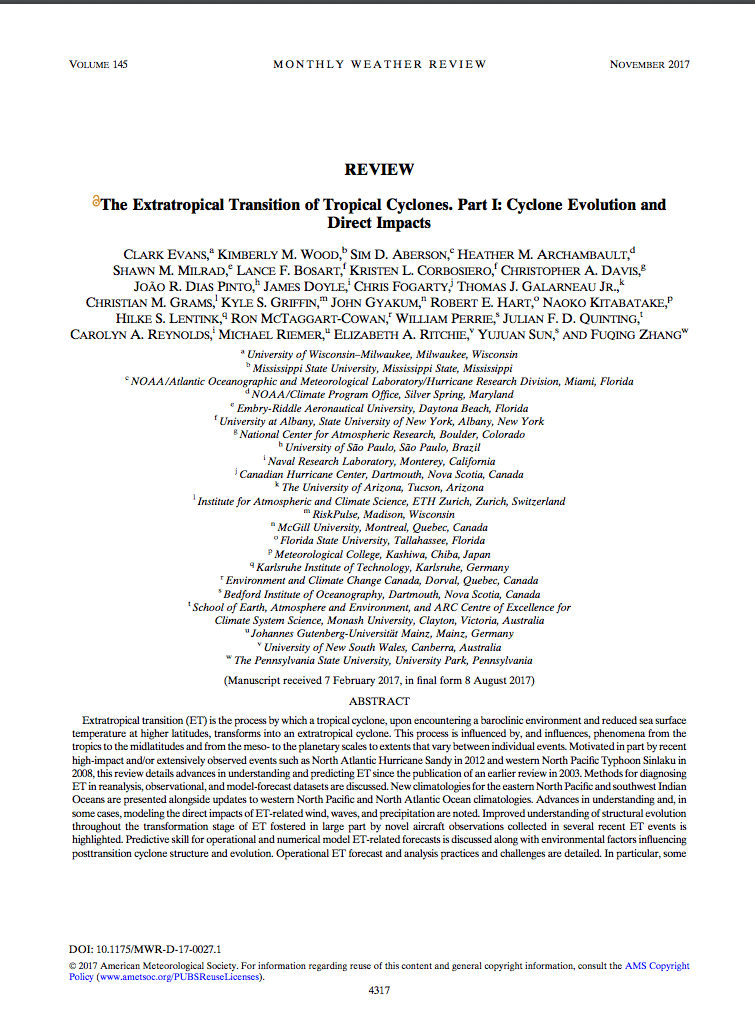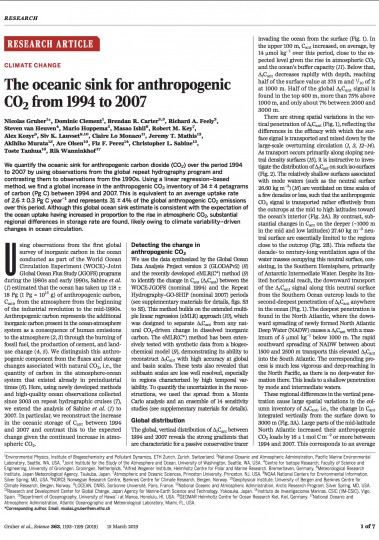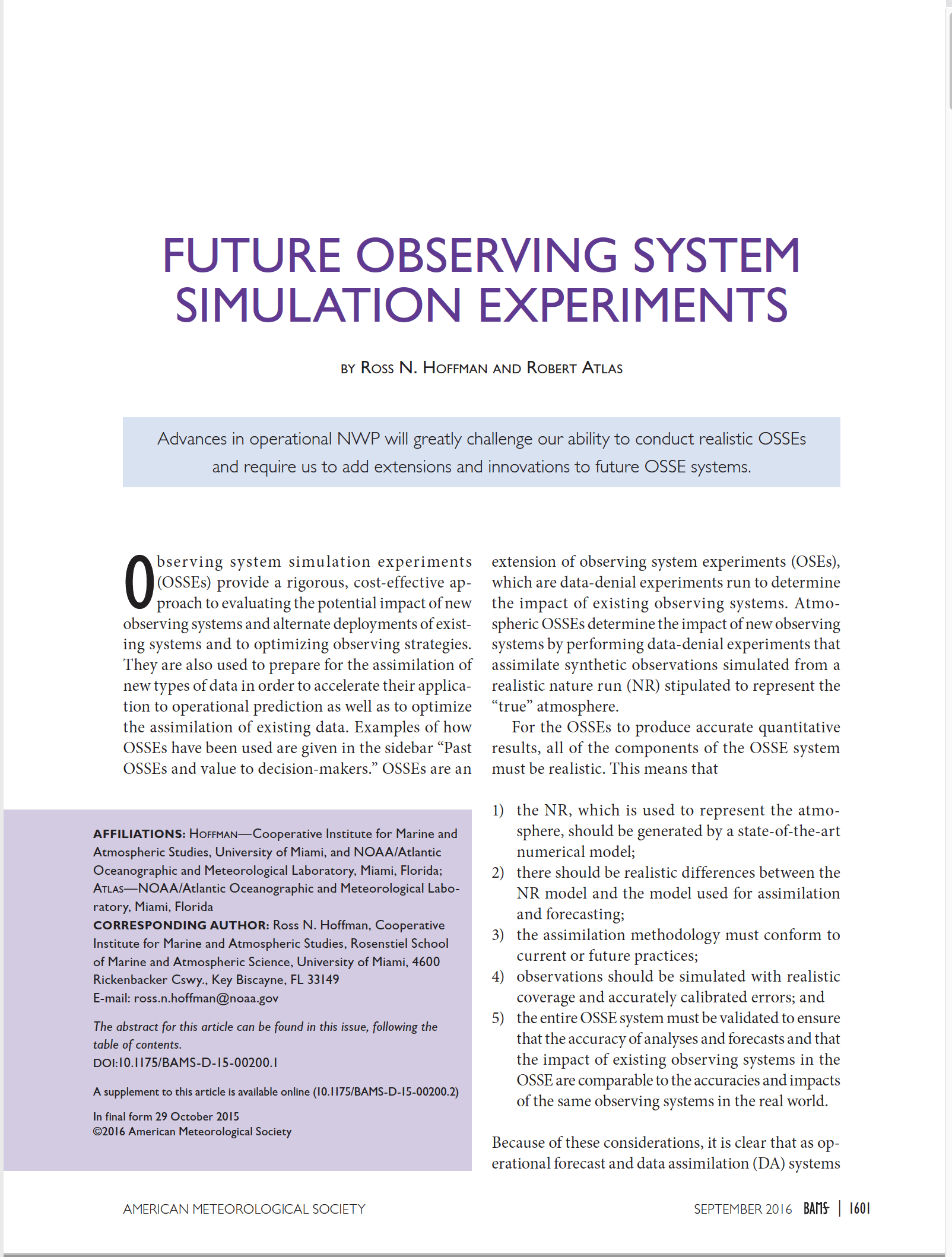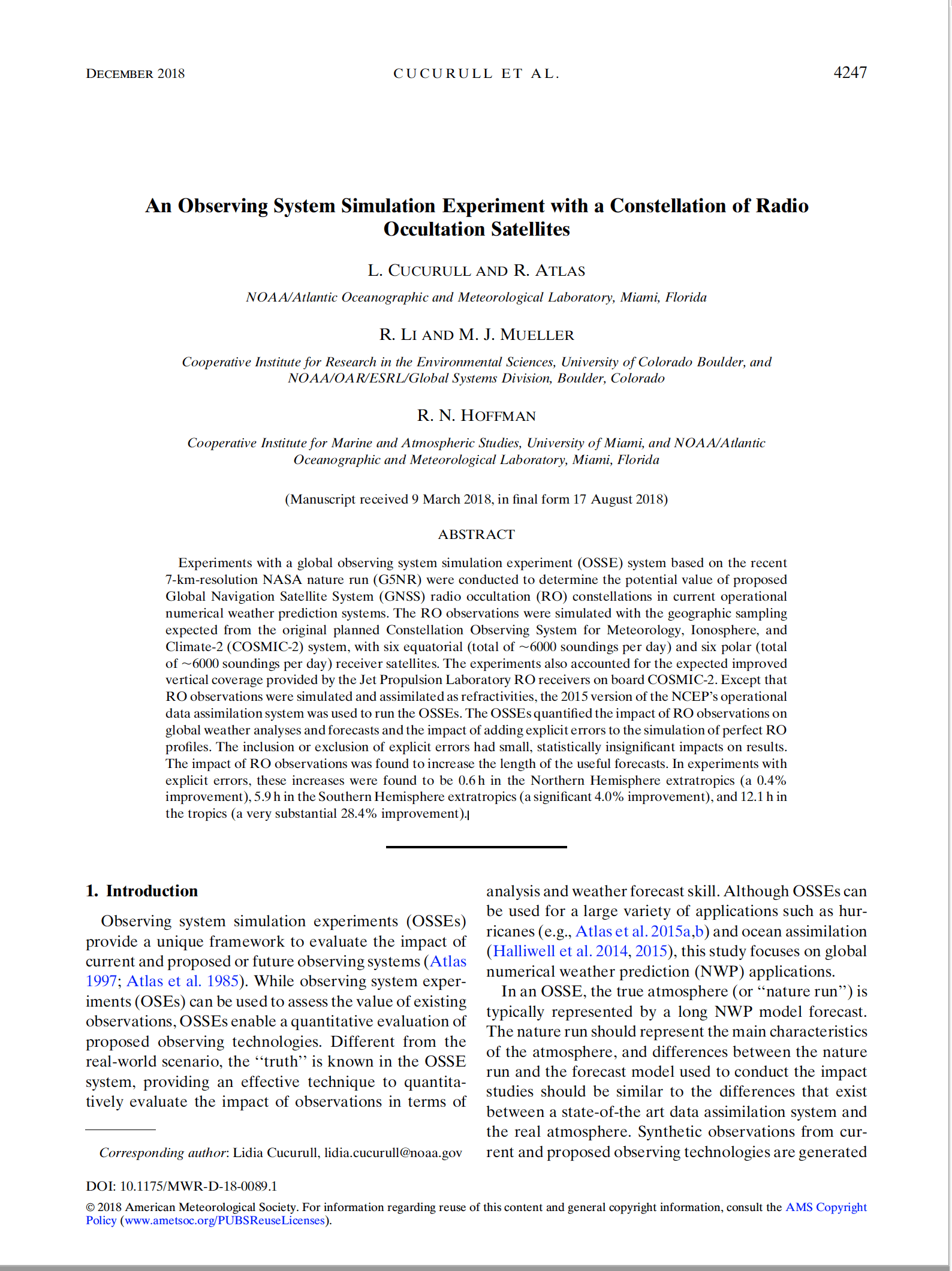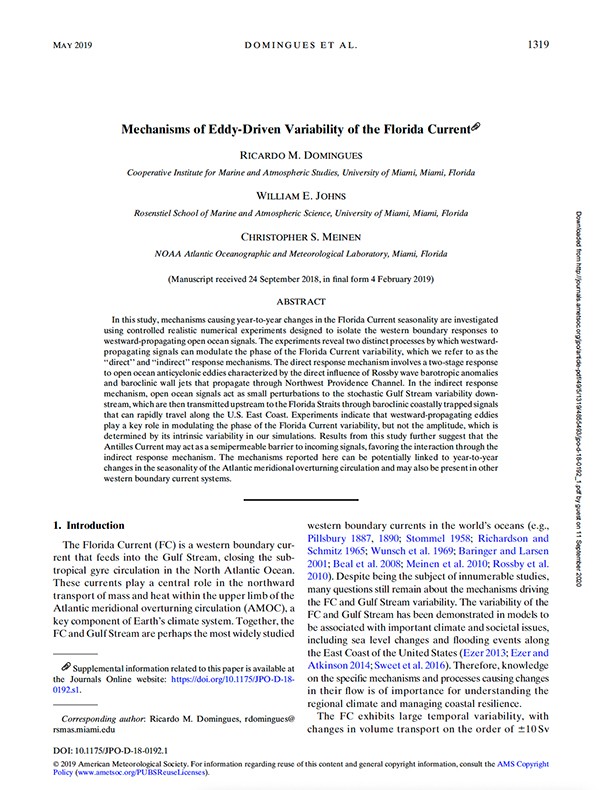The Extratropical Transition of Tropical Cyclones. Part I: Cyclone Evolution and Direct Impacts
Evans, C., K.M. Wood, S.D. Aberson, H.M. Archambault, S.M. Milrad, L.F. Bosart, K.L. Corbosiero, C.A. Davis, J.R. Dias Pinto, J. Doyle, C. Fogarty, T.J. Galarneau, C.M. Grams, K.S. Griffin, J. Gyakum, R.E. Hart, N. Kitabatake, H.S. Lentink, R. McTaggart-Cowan, W. Perrie, J.F. Quinting, C.A. Reynolds, M. Riemer, E.A. Ritchie, Y. Sun, and F. Zhang, 2017: The Extratropical Transition of Tropical Cyclones. Part I: Cyclone Evolution and Direct Impacts. Mon. Wea. Rev., 145, 4317–4344, https://doi.org/10.1175/MWR-D-17-0027.1
Abstract: Extratropical transition (ET) is the process by which a tropical cyclone, upon encountering a baroclinic environment and reduced sea surface temperature at higher latitudes, transforms into an extratropical cyclone. This process is influenced by, and influences, phenomena from the tropics to the midlatitudes and from the meso- to the planetary scales to extents that vary between individual events. Motivated in part by recent high-impact and/or extensively observed events such as North Atlantic Hurricane Sandy in 2012 and western North Pacific Typhoon Sinlaku in 2008, this review details advances in understanding and predicting ET since the publication of an earlier review in 2003. Methods for diagnosing ET…
